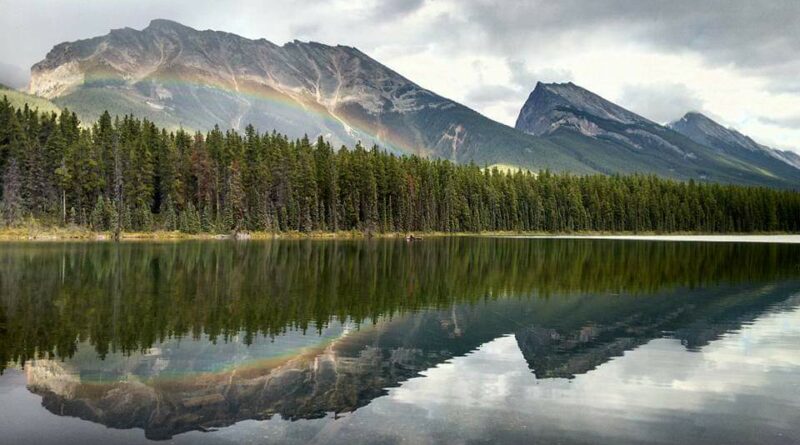A Brief History of Jacques Cartier
[Please note that this page contains affiliate links. If you choose to purchase after clicking a link, I may receive a commission at no extra cost to you.]
Jacques Cartier, in his lifetime, made three epic voyages from France to Canada. He would be one of the first European on record to reach things such as the Gulf, which the St. Lawrence River flowed through in 1535.
His leadership led him to find a cure for scurvy, which the indigenous peoples provided.
As scurvy claimed the lives of about a quarter of his men during the second voyage, he was an excellent map maker and ship navigator.
He would also participate in the Verrazzano’s expeditions in 1524 and 1528. Cartier’s first voyage’s main objective was to discover some lands and islands said to have a pronounced amount of gold, with other treasurable things yet to be found.
The 1534 account suggests a second goal to locate the sea route to Asia.
During that time, in 1534, Cartier arrived in Newfoundland. Cartier made three voyages and would find Canada’s land, working with the Natives to build better trade and personal relationships amongst the French.
He wanted to colonize the West and promote Catholicism, but his most important thing was to explore deeply.
It would be up to Cartier’s nephew, Jacques Noel, to carry on Cartier’s legacy. Finally, Cartier would be permitted by King François I to take his ships and men on a voyage to today’s Native land called Canada.
Jacques Cartier’s first two voyages were sailed in 1534 and 1542. He would have mostly peaceful contact with the local indigenous peoples, including the Montagnais, Algonquin, Mi’kmaq, and the Iroquois of St. Lawrence.
On his first voyage, along with two ships and 61 men, Cartier was ordered by the King to “locate lands and islands where it was rumoured to have a bounty of gold along with many other rare metals and gemstones.”
The French Crown wanted nothing more than to duplicate what the Spanish had already done successfully some years earlier, which found new land and was the first to take over it and its resources.
It was great weather as he sailed the span of the Atlantic Ocean in a short 20 days.
Cartier came upon land that had already been named and well known for years, from the cape of Baie des Châteaux to the Bonne Viste; afterwards, he finally arrived on the bay in which he was trying to locate.
There was a depot within the massive bay for delivering the cod by the fishermen and other things such as wood and water. A prominent Indian leader soon after met Cartier.
Chief Donnacona had protested Cartier’s arrival and all the men in the boats.
Donnacona made threatening advances toward Cartier’s boat amidst three of his sons and brother to lecture the men.
The Chief had made him an axe as a present, as he handed it to Cartier. But unfortunately, Cartier was about to receive the axe, as the French people on the boat captured the natives’ craft and enforced the Iroquois onto their ship.

Cartier Capturing the Chiefs Sons
Cartier eventually obtained permission and assured them, as his men took two of Donnacona’s sons, Taignoagny and Domagaya, saying he would need them to interpret and for their protection.
He promised to bring them back alive. Cartier had set sail, and soon after that, he could not find a river that would have taken him a time-consuming approach right into the continent’s interior.
He tried to determine if he was in a waterway or a bay, and he figured out that the coast had started to turn off the other way. So Cartier drew a map of the Gulf he had discovered and found hinterland.
Jacques Cartier then planned to set sail straight through to Newfoundland, and on August 15, he and his men went home to France. However, his Second voyage would prove to be much more successful.
In 1535, Cartier was responsible for three ships and a considerable crew of 110 men. He was navigating the Grande Hermine. Cartier had Thomas Fromont as his assistant.
He would also bring along the writer Jehan Poullet as he published the second voyage description, and Taignoagny and Domagaya were along for the voyage.
On this excursion, he would sail further up The St. Lawrence river as Taignoagny and Domagaya revealed the way to the river of Hochelaga and the path to Canada.
Hochelaga was surrounded by forest, meaning it had a lifetime supply of a heavily used resource—wood. The settlement had 3,000 people, and cornfields surrounded it in every direction.
It was close to what Cartier named Mount Royal (today known as Montreal). Hochelaga has also been a significant meeting place at the convergence of the Ottawa/Outaouais River and St. Lawrence, neighbouring Algonquin territory to the north, Stadacona territory to the east, and Mohawk lands to the south.
These three posts recommended a society of working and living together with peace without any warfare or violence.
On September 7, 1535, Cartier would find the region of Orléans, which was where Canada’s provinces and territories began. Therefore, at the time, Quebec was considered all of Canada.
On September 17, Cartier had set sail with his two native interpreters, Domagaya and Taignoagny, who started to scheme against the French.
On October 2, Cartier would reach Hochelaga, near a mountain Cartier called Mont-Royal. When Cartier arrived, he was met by the Iroquois with joy and a religious ceremony.
Cartier quickly set sail through the impossible rapids blocking the passages towards the West. Finally, Cartier would come across this booming region, which was in an economic transition.
When Cartier’s first expedition came upon Newfoundland, where he boarded in the Gulf of St. Lawrence, Cartier would discover the local Natives.
They were eager to trade and knew the French would be interested in their furs. Algonquin people told Cartier that they favoured certain European goods over others.
Their furs made great gear for the colder weather than the Europeans had and were used to. In addition, the Natives would get an upgrade in weaponry as the Europeans would trade and give them guns.
It would make the natives more efficient hunters and do better in battles. The natives would trade their high protein diets mostly of fresh buffalo meats, beaver, and other furs.

Stadacona and Iroquis
Upon his return to Stadacona, Cartier discovered his men were building some forts. So naturally, the Iroquois peoples were more than happy to see Cartier as they showered him with delight.
On the other hand, a friendly mood and atmosphere would quickly dissipate. Soon after that, Cartier would continue some social relations with the natives. But, as they did not trust each other, it was a brutal mutual distrust amongst the Iroquois and the French.
They were soon to make trades with the natives to prepare for winter as it was approaching fast. Thus, the Europeans were experiencing their first Laurentian winter.
It happened to be one of if not the most brutal of winters on record and the coldest in years. From mid-November for exactly five months until mid-April, all the ships were icebound.
The river had become frozen in Hochelaga, with snow as high as four feet. Then, in December, scurvy showed up in the native populations of Stadacona.
The French would soon fall victim to scurvy as well. About 100 of Cartier’s 110 men had scurvy and colds, and flu cases as February came around. Eight men had died, with another 25 of them would eventually slowly die.
Cartier learned a remedy from the Natives made with Annetta (white cedar) and other herbs and tree barks to make a concoction of a scurvy healing vitamin C-packed tea that rapidly cured his crew.
If left untreated, scurvy can cause symptoms of muscle pain and weakness, easily bruise and skin irritations, anemia, and gum disease. So Cartier was friendly with his native contacts to learn from them.
He wrote about and was the first to tell people about the customs and religions of the Indians of St. Lawrence.
Cartier and his men were ready to return to France as spring arrived. On May 6, they left Sainte-Croix and Cartier’s two ships and four children gifted to him last fall.
After being gone from Saint-Malo for 14 months, Cartier came back on July 16, 1536.
Cartier had brought back an old chieftain who bragged about visiting the prosperous country Saguenay, and perhaps most important was that he had gold. As soon as Cartier returned to France, he gave François I the voyage report.
He told François I of a river mile upon miles long that may lead to Asia, and Cartier had captured Donnacona to add his testimony.
Amazed at Cartier’s profound work, the King gave him the Grande Hermine ship. Soon, the war had broken out between Charles V of Spain and François I of France, preventing Cartier from returning to the sea.
Cartier had gone to Ireland to find and bring back his cousin Fitzgerald to escape the war. Thus, it would be just over four years before Cartier would make his third and final voyage.
On October 17, 1540, King François authorized Cartier’s third voyage and crowned him captain-general.
He was instructed to go to Hochelaga and Canada and go as far as Saguenay.
Cartier brought along men from all backgrounds, including people from multiple industries and those involved in the arts.
He was also ordered to bring 50 men freed from prisons to do all the labour work, such as cleaning the ships. His voyage goals were to explore as much as possible, and, if need be, they were to live alongside the natives.
On January 15, 1541, the royal decision that Protestant Jean-François de La Rocque de Roberval receive a commission replaced Cartier as colonizing the West.
Although Cartier would keep as much power as Roberval, Roberval focused more on colonization, and Cartier concentrated on exploration. In the end, Roberval was named the leader of the whole thing and had the authority over anyone who disobeyed and or disagreed with any of his ideologies.
Cartier’s Exploration
Cartier was ready to explore Roberval’s permission, who gave him full authority and told Cartier to represent him. So, in 1541, he set sail on five ships, including Émérillon and the Grande Hermin.
With the help of a Spanish spy, they put 1500 men on the ships. Two brothers-in-law: Vicomte de Beaupré, Guyon Des Granches, with pilot Macé Jalobert; Cartier’s nephew, Étienne Noël; and the shipmaster Thomas Fromont were all gathered and brought aboard by Jacques Cartier.
All the Iroquois whom Cartier brought to France in 1536 died except one child who would stay in France. On August 23, 1541, Cartier re-emerged, meeting Stadacona once again. The Iroquois excepted Cartier with open arms and lots of happiness in the atmosphere.
Cartier informed the Iroquois about the death of Donnacona, although he would then lie by telling them the other Iroquois he brought back were thriving in France and refused to come back.
The friendliness between the two groups was quickly lost and forgotten. Cartier left and would head up the river establishing himself at the furthest west point of the cape, which was at the widest part of the Rivière du Cap-Rouge.
They would find a lifetime supply of white cedar and diamonds that turned out to be quartz, and they believed they found fine gold. Soon after, Cartier would send some men back to send a message to the King.
Cartier shipped Noël and Jalobert, along with two ships, to report for France. Cartier then began constructing two forts, where one would be built at the base of the cape, and the other was to be made at the top of the mantle. Cartier soon arrived back and observed the Iroquois trust was fading away fast.
The Chief of Achelacy turned his back in distrust and would desert Cartier. Instead, Cartier ensured he and his men had all defences up as tension rose, preparing to fight a full-on war.
Unfortunately, the account of what happened next is lost in history, and what happened all the winter that season will forever be lost in the ether. According to one report, the Iroquois defended their settlement successfully to kill about 35 Frenchmen. Then, in June of 1542, Cartier and his crew members set up camp.
Newfoundland
Cartier would go to St. John’s (Newfoundland) to meet with Roberval, who immediately ordered Cartier to return.
Roberval believed that Cartier had diamonds and gold with him, so secretly, Cartier sailed towards France, denying Roberval of Cartier’s exploration experience and all the human resources he had. Cartier on board had nothing but iron pyrites and not gold.
The diamonds turned out to be nothing more than rocks called quartz crystals. Due to this and Cartier’s actions, he was not sanctioned for the next mission in 1543 by Roberval.
Cartier later would have to explain Roberval’s accounts, where Cartier had to appear before a tribunal a few months into 1544.
Cartier had successfully proven his trust with the King’s money. He was also ordered to pay 9,000 livres to Roberval and some merchants. However, in 1588, some merchants declared that the people of Saint-Malo still had not been paid.
Cartier would complete three mostly successful voyages with some hiccups of finding false gold and diamonds and some deaths as some of his men died of scurvy during his second voyage but would find a cure with the native’s help.
He was the first European on the written record to find the St. Lawrence River.
He made friendly relations with the natives and set up fair trade with them. He was a very charismatic leader. Cartier was a remarkable navigator, as well as a mapmaker. He founded better passages to get to Canada with Donnacona’s sons, Taignoagny and Domagaya.
He set up trade relations along the Gulf of St. Laurence and other areas along with Quebec. Colonization was on his mind, but he was an explorer at heart.
He was said not to have any children, but most likely did, and would pass away at 66 years old back at home where he was born in Saint-Malo in France alongside his wife, Mary Catherine des Granches.
Bibliography:
Belshaw, John. Canadian History: Pre-Confederation. BCcampus, 2015.
Brad Loewen and Vincent Delmas, “The Basques in the Gulf of St. Lawrence and Adjacent Shores,” Canadian Journal of Archaeology 36, issue 2 (2012): 223.
Marcel Trudel, “CARTIER, JACQUES (1491-1557),” in Dictionary of Canadian Biography, vol. 1, University of Toronto/Université Laval, 2003–, accessed November 13, 2020, http://www.biographi.ca/en/bio/cartier_jacques_1491_1557_1E.html.
True, Micah. 2012. “‘Un Remedde Contre Toutes Maladies’: Travel Writing and the Scurvy Incident in Cartier’s Second Voyage.” Quebec Studies 54: 3–16. doi:10.3828/qs.54.1.3.
“The Search for a Northwest Passage.” In Science and Its Times, edited by Neil Schlager and Josh Lauer. Vol. 3. Detroit, MI: Gale, 2001. Gale In Context: World History (accessed November 22, 2020). https://link.gale.com/apps/doc/CV2643450305/WHIC?u=red68720&sid=WHIC&xid=c46557db.
Belshaw, John. Canadian History: Pre-Confederation. BCcampus, 2015, 85-88
Brad Loewen and Vincent Delmas, “The Basques in the Gulf of St. Lawrence and Adjacent Shores,” Canadian Journal of Archaeology 36, issue 2 (2012): 223.

